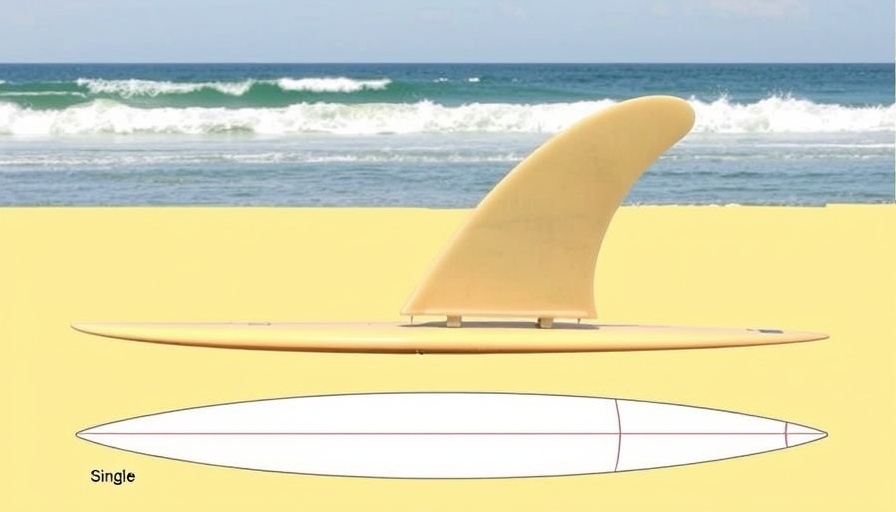
Unveiling the Origins of the Single-Fin Surfboard
The single-fin surfboard represents not just an innovation in wave-riding equipment but a profound transformation in the culture of surfing itself. Before this groundbreaking design, surfers struggled with finless boards that lacked control and made turning nearly impossible. The introduction of the single-fin setup revolutionized how surfers navigated the water, offering greater stability and an enhanced riding experience.
The Vintage Experience: Surfing Before Fins
Imagine soaring over the waves, foot interactions serving not just as balance, but also as a skeg to steer your board. This was reality for early Polynesian surfers who, navigating the ocean's waves, relied entirely on their skill and core strength to maintain control without any fins. When surfing entered the mainstream in the 1920s amidst the vibrant surf scenes at Waikiki, the finless experience began to fade as new designs took hold.
Tom Blake's Ingenious Twist
The pivotal moment came in 1935 when Tom Blake, a pivotal figure in surfing history, affixed a metal speedboat keel to his paddleboard. This 12-inch innovation changed the game. Yet, it wasn't immediate—Hawaiians were hesitant to adopt Blake's addition until after World War II when the sport boomed. As more surfers experimented, the single-fin setup became the standard. By the 1950s, glass-on fins were the norm, embracing new materials that allowed for refined designs, like the dolphin-inspired shapes that improved maneuverability exponentially.
The Cultural Shift Towards Fin Design
Design became pivotal in the 1960s, thanks to icons like Nat Young, who won championships with groundbreaking fin designs, including the narrow-based "high-aspect ratio" fin, which afforded sharp turns and robust control on the waves. This evolution of single-fins underscored not just a technical progression but also a cultural shift towards recognizing the importance of equipment in enhancing performance.
A Fork in the Tide: Single-Fin vs. Twin-Fin
By the 1970s, surfing language adapted; the term 'single-fin' entered common usage alongside the rise of twin-fins. This dual-system approach sparked a divide among surfers. While single-fins offered reliability and control, twin-fins promised agility and speed, especially in smaller surf conditions. The debate over which setup executed a better performance continues today, reflecting the passionate divide amongst surfers regarding their preferred board dynamics.
Modern Implications: The Legacy of the Single-Fin
Today, the single-fin remains relevant, particularly among purists and those relishing the nostalgia of classic surfing. Its functionality is embraced in various contexts, from competitions to leisurely surf sessions. As surfers return to their roots, the single-fin symbolizes a balance between tradition and evolution in surfing culture.
Why Ride a Single-Fin? Understanding Its Unique Value
The single-fin setup offers surf enthusiasts a tailored connection to their board, enabling riders to enjoy smoother turns and greater stability, making it an excellent choice for larger waves. Surfers drawn to a slower, more graceful style—think of enjoying the beauty of the ocean while maintaining control—often favor this fin style. Understanding the legacy and mechanics of single-fins can transform every surf experience into something deeper and more fulfilling.
As surf culture continues to evolve, keeping an eye on the amenities of single-fins will add layers of appreciation for the sport. So the next time you step on your board, consider the craftsmanship of that fin beneath your feet. The single-fin setup is not just part of surfing’s past; it shapes its future.
 Add Row
Add Row  Add
Add 




Write A Comment